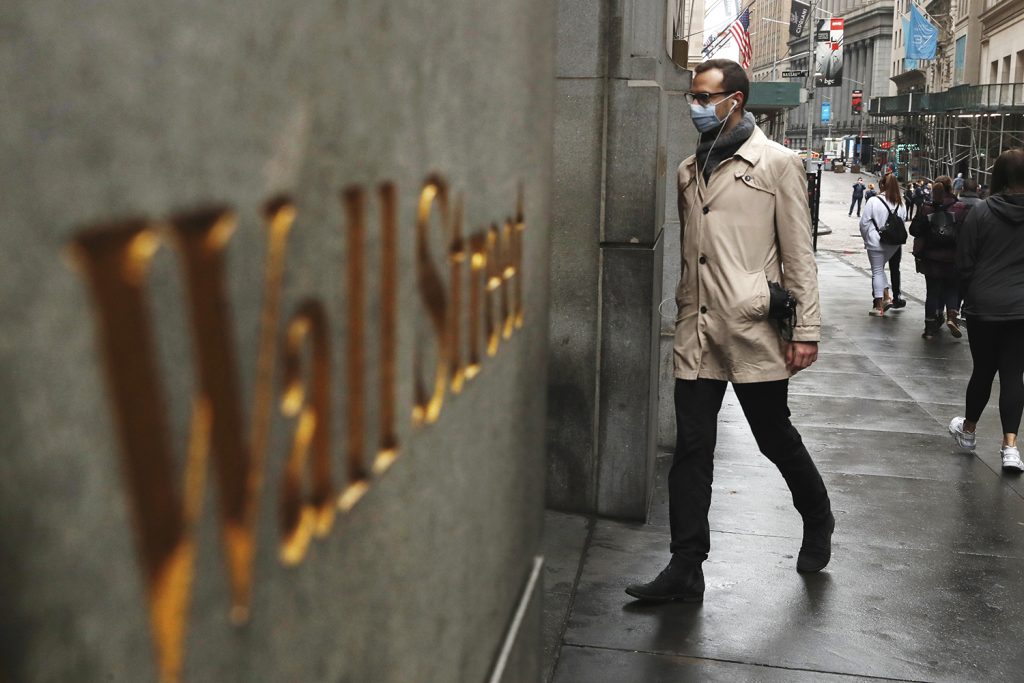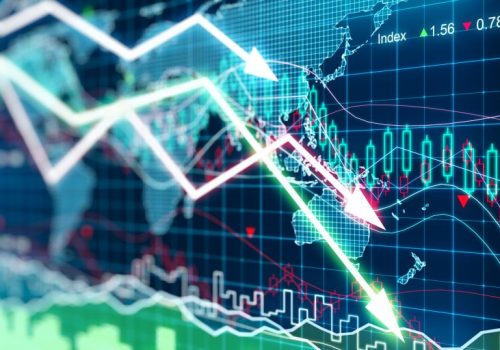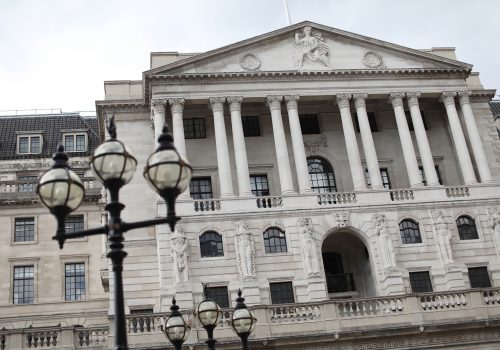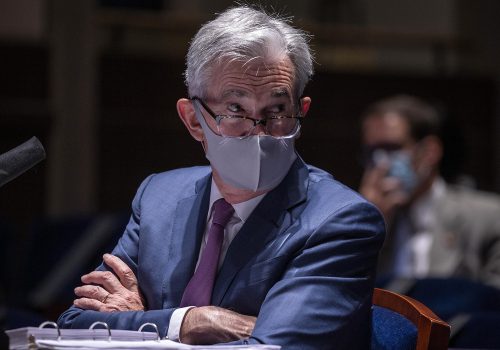Since the start of the pandemic, governments have been employing measures to curb financial and economic crises. Hung Tran, nonresident senior fellow at the Atlantic Council, discusses the problems that will come after these government interventions—inefficiencies, imbalances, and vulnerabilities—which are posing a serious risk to global financial stability. The second piece in the series is available here.
As the pandemic spurred financial and economic crises earlier this year, governments responded with prompt and massive government interventions. Trillions of dollars in fiscal measures and asset purchases by central banks have helped stabilize the situation, setting the stage for a split recovery—swift for financial markets but slow and uneven for the overall economy. While huge fiscal and monetary support measures have been necessary to avoid deeper damages being done to the economy and financial system, those actions—especially keeping interest rates low for long—have also reinforced many known areas of inefficiencies, imbalances, and vulnerabilities that will make the economy and financial system fragile and prone to crises going forward.
First, repeated doses of massive and sustained fiscal and monetary interventions risk establishing a new normal for the economy as markets get used to government support. Central banks buying and holding the debt of economic agents, and preparing to buy even more when things go wrong, have helped economies and financial markets function. But widespread expectations that over-sized balance sheets will be persistently maintained by major central banks suggests that such accommodations are now viewed as typical. Any sign that central banks are tapering away from the generous monetary accommodation characteristic of the crisis intervention will trigger a market tantrum, causing central banks to reverse their efforts to establish pre-crisis economic normalcy. This is an unhealthy state of affairs, undermining the basic tenets, efficiency, and dynamism of a capitalist market economy—basically repeating Japan’s experience of the slow growth decades.
Second, low interest rates and plentiful central bank liquidity employed in the pandemic response encourage borrowing by all sectors of the economy—governments, corporations, and consumers—and thus contribute to increasing total debt. In fact, the total debt has increased significantly in the decade after the Great Financial Crisis (GFC), reaching a new record high of $258 trillion or 331 percent of global gross domestic product (GDP) in the first quarter of 2020, according to the Institute of International Finance. The pandemic will only continue to push the debt much higher. The record debt level has been explained away by many economists, arguing that low interest rates will keep high levels of debt sustainable. This is true, but risks locking the economy in a trajectory of low growth, low interest rates, and high debt—any spark of private sector growth or a spike in price inflation will push up interest rates, bringing the debt edifice crashing down.
Third, government support measures have fostered a K-shaped recovery. Financial markets have recovered quickly from their early April lows to make up for the pandemic losses, posting new record highs in several markets. However, equity markets have shown signs of stretched valuation, and their performances have been narrowly based, driven by a handful of large high technology companies; altogether rendering them vulnerable to frequent large corrections. By contrast, the economic recovery has been slow, fragile, and uneven, with 6.2-8.7 million of workers in the United States expected to transition from being temporarily laid off to being permanently unemployed by late this year. The US Pandemic Unemployment Assistance and other benefit extension programs have cushioned the pain of job losses; but millions of workers will have exhausted the benefits soon unless the government extends the benefits—which would probably happen at scaled-down levels with much uncertainty. The current situation is somewhat comparable to the 8.6 million permanently unemployed after the GFC—it took ten years for the unemployment rate to get back to the pre-GFC level.
The K-shaped recovery has also accentuated wealth and income inequality. The financial market’s advances mainly benefit the top 10 percent who, in terms of wealth, own 84 percent of the US stock market. Moreover, the people in the top 10 percent occupy jobs where they can work from home and online, facing limited job losses and exposure to the pandemic. By contrast, the bottom 50 percent own few financial assets and tend to work in lower-paying jobs, many of which have been lost. Those fortunate enough to have kept their employment work in areas more impacted by COVID-19 or with more physical contact required, increasing their susceptibility to COVID-19 infection. The new monetary approach by the US Federal Reserve that targets average inflation will keep interest rates near zero for longer—at least through 2023—aiming to sustain aggregate growth which can promote employment in a new version of “trickle down.” However, this will likely worsen inequality.
Fourth, the quick recovery of financial markets also aborted an opportunity for a real-life stress test of mutual funds with regard to their redemption risk—a surge in withdrawal demand by investors in the funds. In the first quarter of 2020, there was a jump in redemption from mutual funds causing fire sales of assets to meet withdrawal requests. In particular, redemption from hedge funds rose to a high of more than 9 percent of their net asset values. US prime money market funds suffered an even heavier withdrawal rate of 17.6 percent in March. The exodus stopped in early April when the Fed stepped in, after which many funds’ flows and asset prices quickly recovered to pre-crisis levels. After this episode, it is still uncertain how well fund managers and operators have improved their liquidity risk management to deal with an unexpected surge in redemption demand, especially in the absence of timely central bank support. Recently introduced measures such as swing pricing (adjusting the net asset value per share for shareholders selling or buying shares in the funds) and dilution adjustments or levies (transaction charges on large sellers or buyers of funds) can address the fairness issues—large buyers or sellers of a fund should bear a fair share of transaction costs instead of the costs being borne by the entire fund investor base. However, these rules do not address the fundamental problem of liquidity mismatch: funds hold more illiquid assets to get more yield but offer customers instant liquidity. In times of market turmoil, this mismatch leads fund managers to sell illiquid assets into falling markets to raise funds to meet redemption demand—unless or until rescued by central banks. This systemic risk remains a key financial stability weak point in the next crisis.
Indeed, the probability of a new global financial crisis arriving in the next two years is 20 percent, says a recent survey of 162 global businesses by Oxford Economics. This expectation makes governments’ fiscal and monetary responses today—and the inefficiencies, imbalances, and vulnerabilities they reinforce in the economy—even more concerning for the future of economic stability, and make the concerns highlighted above (and in the second piece in this series) worthy of attention.
Hung Tran is a nonresident senior fellow at the Atlantic Council; former Executive Managing Director at the Institute of International Finance and former Deputy Director at the International Monetary Fund.
Further reading:
Image: A man wears a protective mask as he walks on Wall Street during the coronavirus outbreak in New York City, New York, U.S., March 13, 2020. REUTERS/Lucas Jackson/File Photo



